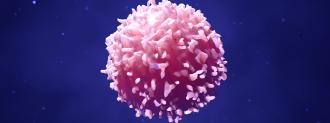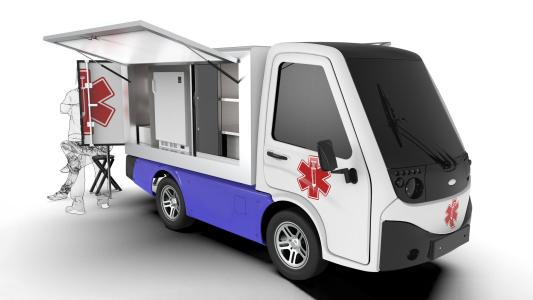The FDA has granted an emergency use authorization for a T cell test for COVID, designed to look for previous infection with SARS-CoV-2.
Developed by Seattle-based Adaptive Biotechnologies, the T-Detect COVID Test does not look for antibodies to see if someone has been previously infected. Antibodies can be imperfect targets; test too early, and the immune system hasn’t cranked them out yet, but test too late, and they may have faded already.
Instead, a T cell test for COVID matches antigens (like the coronavirus’s spike protein) to receptors on another type of immune system cell — you guessed it, the T cell.
This test could show how many people have really had COVID-19, as well as information on how long immunity lasts and how well vaccines are working.
T Time
The cells at the heart of the T cell test for COVID — specifically, memory T cells — are tasked with keeping a “memory” of previous infections.
If a pathogen reinfects the body, the T cells are responsible for recognizing it and calling in the appropriate response to snuff it out. Memory T cells can crank out new antibodies to neutralize the virus, as well as triggering other defense systems to stop an infection.
When the body doesn’t create memory T cells — as in malaria — the immune response is compromised, allowing the pathogen to infect you over and over again.
These memory T cells are at the heart of the T-Detect COVID Test — their memories are analyzed to determine whether your body remembers a SARS-CoV-2 infection.
Unlike antibodies, T cells are living cells that replicate themselves, carrying on the memory of the invader even after antibodies fade. But while there are hundreds of COVID-19 antibody tests, testing for specific T cells that recognize just a single virus is extremely hard — especially when researchers have found that some people unexposed to the virus have T cells that show a reaction to it, possibly because of previous infections by other coronaviruses.
So Adaptive had to crunch a lot of data to develop their test.
“When you think about a patient level, we’re looking at 300,000 to 400,000 T cells, on average,” Adaptive chief medical officer Lance Baldo told STAT. “When you look at a population level we’re looking at hundreds of millions, and then ultimately billions of T cells. So it ends up being a web scale problem.”
When the problem is too much data, the solution is often machine learning, and Adaptive turned to their neighbors at Microsoft to provide just that.
“Microsoft wants and wanted to get into healthcare,” Baldo told STAT. “Adaptive needed expertise in cloud computing, machine learning, and AI. So it was a pretty ideal fit.”
Adaptive and Microsoft were able to access blood samples from people infected with SARS-CoV-2, STAT reports, and they began sequencing the T cell receptor’s genomes, searching for those that matched the novel coronavirus.
“T-cells speak a kind of language,” Peter Lee, the corporate vice president of Microsoft Research & Incubations, told ABC News. “We use machine learning to help translate that into the language of diseases.”
With the help of Microsoft’s machine learning algorithm, they compared results from COVID-19 patients to those from a database of T cell genomes, which Adaptive had been working on for years before the pandemic.
Surprisingly, the algorithm to spot COVID-19 infections ended up being pretty simple.
“It’s a viral infection and drives a raging T cell response, and it turns out you can find the exact same T cell receptors in many people. And that allows you to use a pretty simple statistical approach,” Jonathan Carlson, Microsoft’s senior director of immunomics and their Adaptive pointman, told STAT.
Armed with that model, the T-Detect COVID test looks for those tell-tale signature receptors left behind by SARS-CoV-2 from a blood draw.
“We’re looking for that imprint, like a crime scene investigation,” William Li, a doctor who has prescribed T-Detect and the president of the Angiogenesis Foundation, told ABC News.
STAT reports that the test has an over 99% specificity rate, meaning the chance of a false positive is extremely low, and a sensitivity rate — i.e., correctly identifying true positives — of 97.1%.
A T Cell Test for COVID Offers Long-hauler Clarity
A T cell test for COVID may help provide a retroactive diagnosis for people who may be suffering the long-term effects of SARS-CoV-2 — and with it, a sense of clarity and closure.
“So many people had the disease, recovered, never got a clear-cut diagnosis, yet they’re suffering from these bizarre, persisting symptoms,” Li told ABC. “The T-cell test has been really useful in this long tail of COVID to help patients establish where they are.”
The test could also tell us how many people have ever gotten COVID-19, how rapidly antibodies fade, and what that means for immunity.
A T cell test for COVID may also be just the beginning.
“Your body (is) the world’s most finely tuned diagnostic, because most of the time, it knows what you’re facing and helps you to actually clear that threat,” Baldo said in an interview with GeekWire.
While the first T-Detect test is for COVID-19, “you can imagine eventually we can build out dozens and eventually hundreds of tests using the same platform to let the T-cells tell us what they’re facing, or what they faced in the past.”
“This wouldn’t have been possible 5-10 years ago,” Sudeb Dalai, Adaptive’s senior medical director, wrote Freethink via email. “Now that we have the process and infrastructure in place, we can build on this for future indications.”
We’d love to hear from you! If you have a comment about this article or if you have a tip for a future Freethink story, please email us at [email protected].






